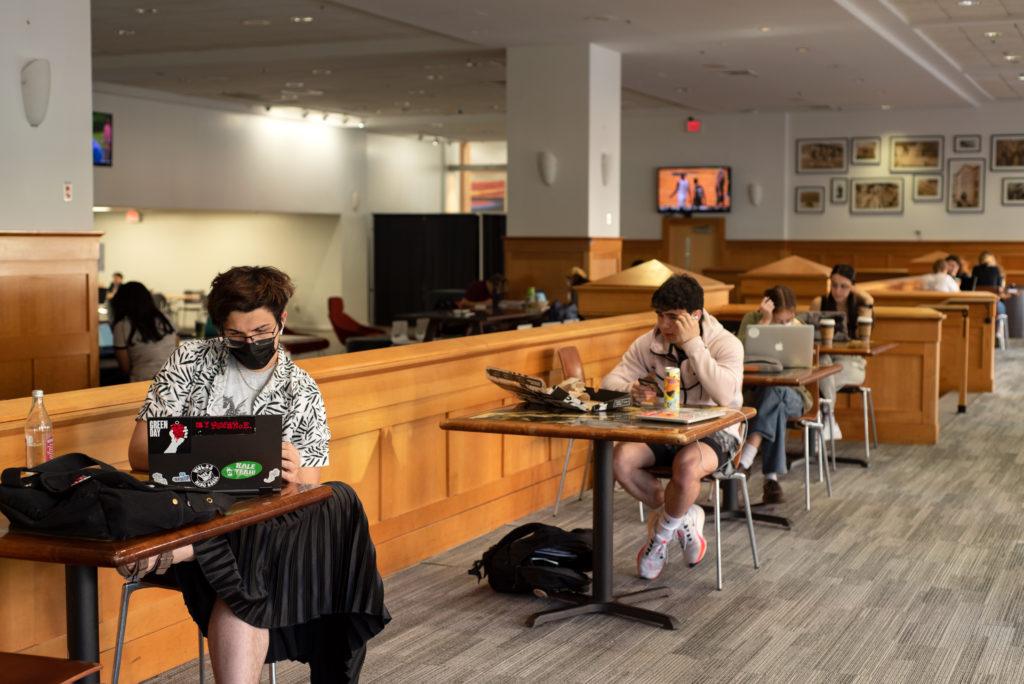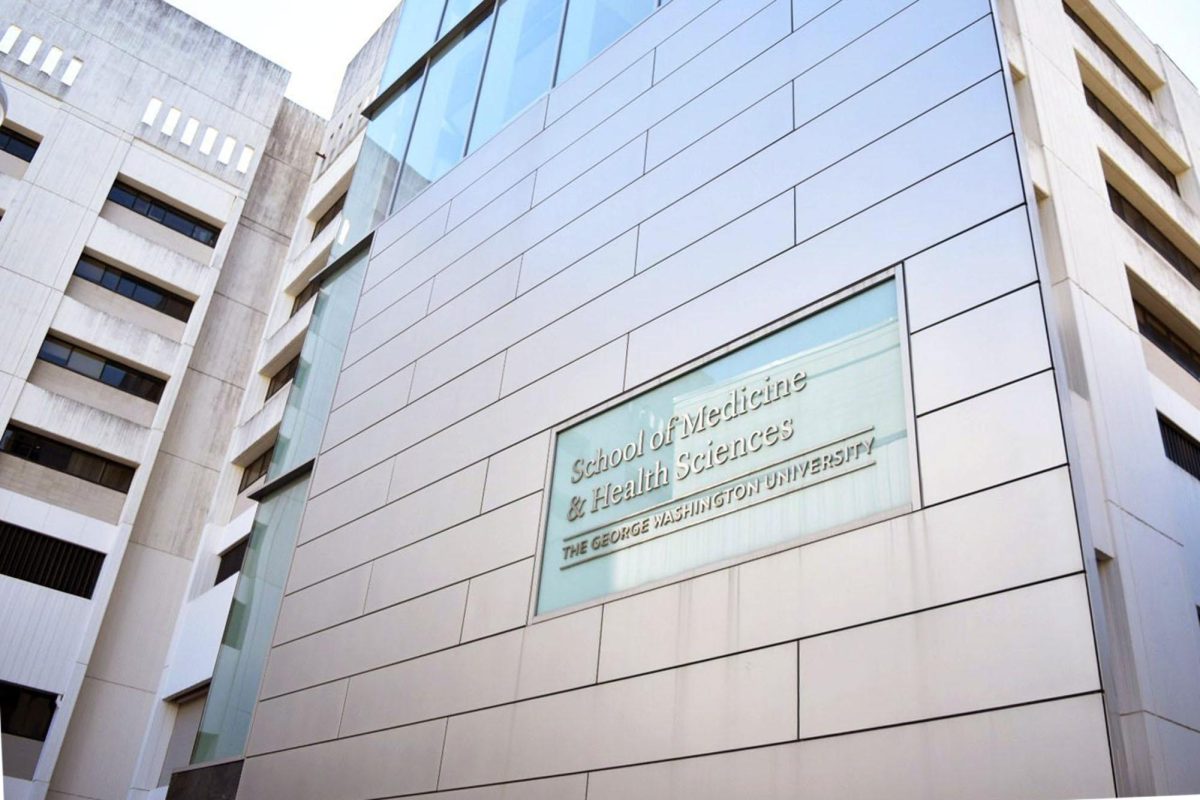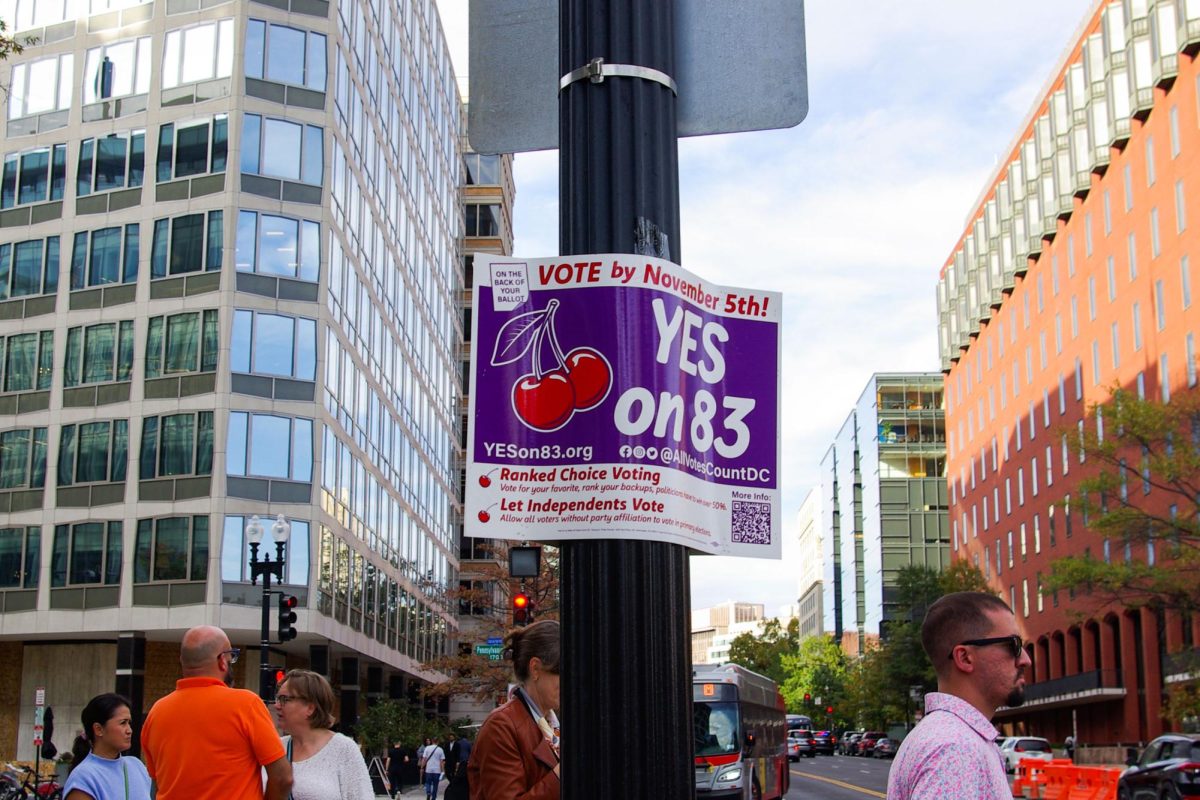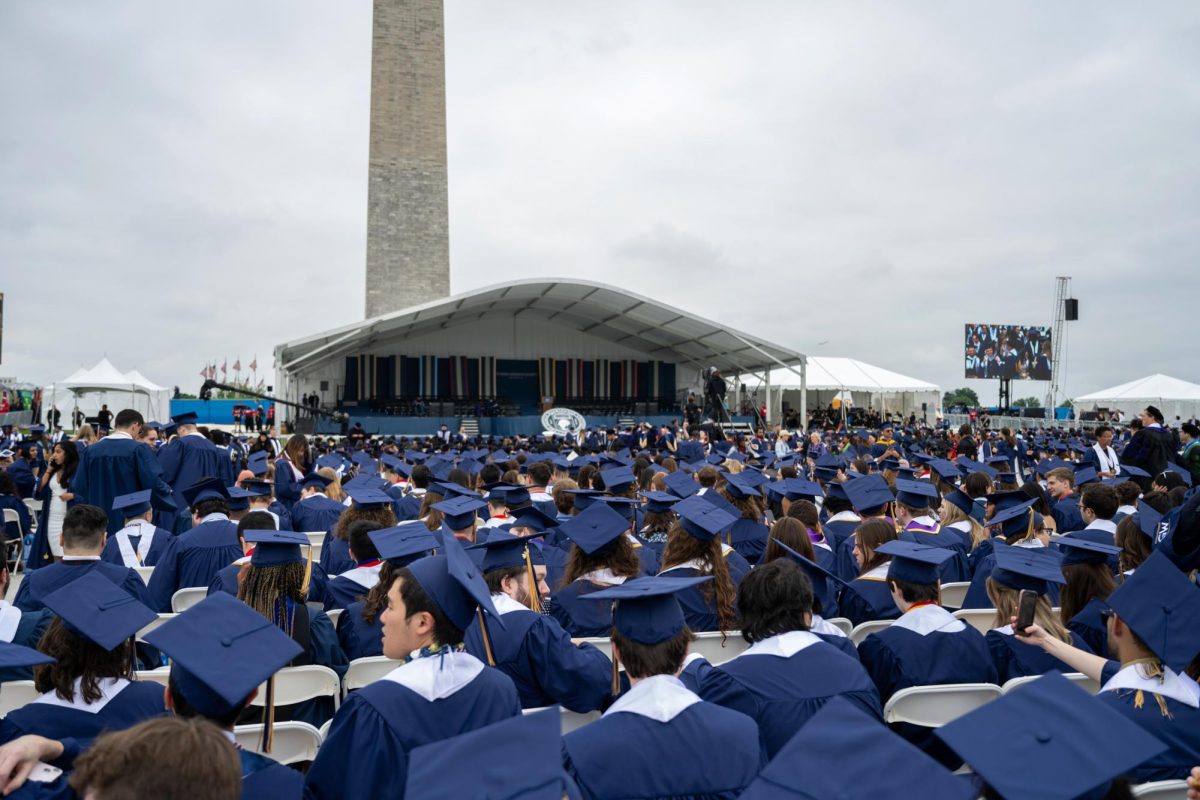GW’s reinstatement of its indoor mask mandate has fallen in line with other local universities’ heightened restrictions as the spread of the coronavirus accelerates in the District.
Public health advisers at higher education institutions said recently low transmission levels of COVID-19 allowed for universities to drop more restrictions, and a small number of colleges like GW have reinstated mask mandates as experts warn of a potential case spike from the BA.2 Omicron subvariant. GW officials reinstated the mask mandate eight days after lifting the requirement, a decision made after GW’s positivity rate slid up to 1.87 percent and the District reported a 54 percent increase in its weekly case rate.
Ray Lucas, GW’s COVID-19 coordinator, said the campus positivity rate increased from 0.62 percent the week before spring break to 1.50 percent two weeks later, but the District’s transmission rate remained low.
Lucas said the uptick in cases with the new variant wasn’t enough “strong” evidence to determine if the rise in cases recorded in the weeks after spring break led to significant transmission in indoor academic spaces or increased rates of severe illness among campus members who tested positive.
“Our strategy was to relax the mask mandate from ‘required’ to ‘strongly recommended,’ while at the same time to continue our surveillance testing program for at least several more weeks to observe if a mask policy change impacted cases on campus,” he said in an email.
Lucas said the mask and testing policies are unlikely to change before the end of the spring semester, but officials will reassess their public health measures when they think cases are low enough for an overall safe campus.
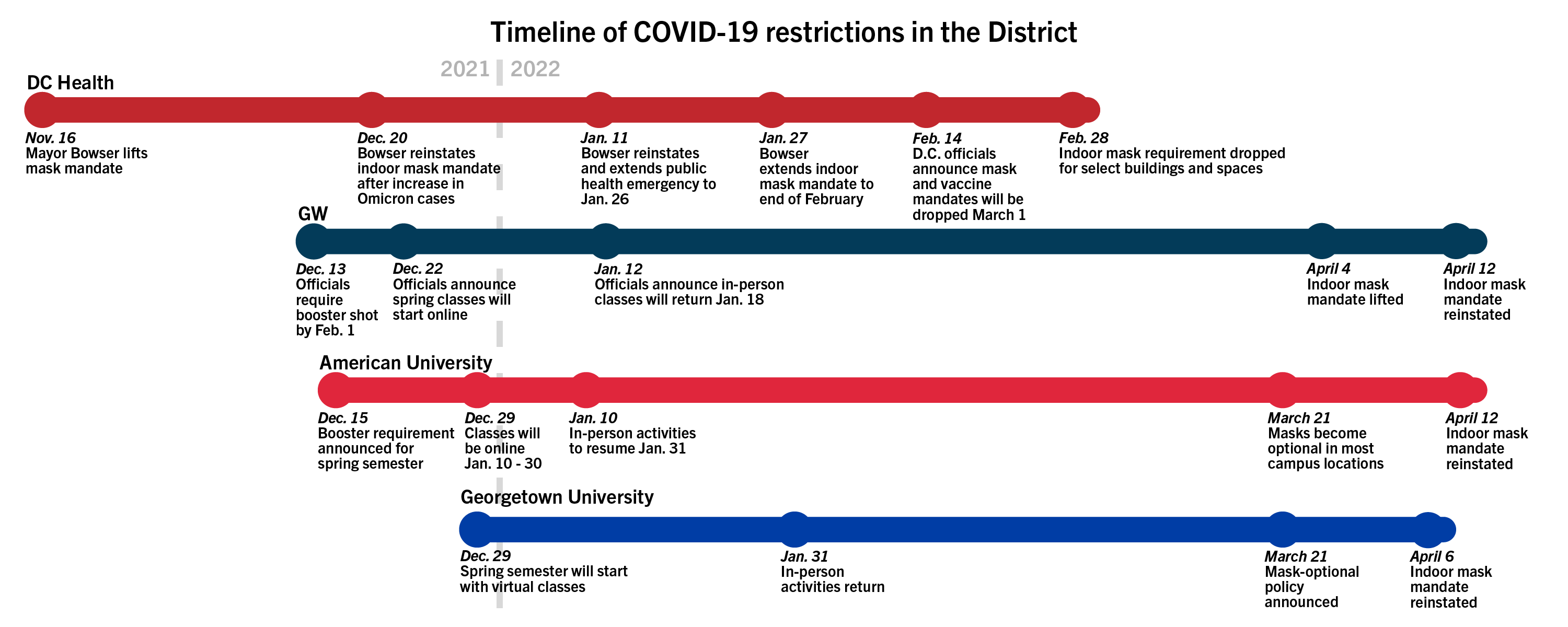
Nicholas Anastacio | Graphics Editor
Georgetown and American universities lifted their indoor mask mandates in late March but have since reinstated them. Johns Hopkins University officials also reinstated their university’s mask mandate last week after lifting it in early March.
Lucas said the uptick in cases on campus was likely not the result of the temporary lifting of the mask mandate because the entire District experienced a concurrent surge in cases. The District first reported a case of the BA.2 Omicron subvariant in late March, but DC Health officials said it was unclear if the new strain was responsible for the slight increase in case rates.
While DC Health reported a 54 percent increase in its weekly case rate, public health experts said case rates are expected to rise in the next few weeks despite lower infection rates than during the original outbreak of the Omicron variant in December and January.
The District’s weekly case rate rose from 63.8 per 100,000 residents at the start of spring break to 89 at the end of spring break, 115.3 a week later and 204.2 at the start of April, according to DC Health data.
The Centers for Disease Control and Prevention raised the District’s COVID-19 transmission level classification from “low” to “medium” risk Thursday about two months since the last such designation.
Howard University officials announced Thursday that all classes will be held online until the end of the semester after recording a 5.67 percent positivity rate. The University held last falls’ final exams online as a response to rising cases during the outbreak of the Omicron variant.
Lucas said officials identified clusters of on-campus COVID-19 transmission in previously low transmission settings, like classrooms, which prompted them to reinstate the mask mandate in hopes of avoiding another virtual final exam session to close out the semester.
“Masking and common sense measures have kept on-campus transmission very low,” he said. “We cannot control COVID in the larger community, but we can do our best to maintain a safer campus where we can all learn, work and live together safely.”
Milken Institute School of Public Health Dean Lynn Goldman, who oversees the University’s public health lab which performs the community’s COVID-19 testing, defended GW’s decision to reinstate the mask mandate in a Washington Post op-ed Thursday.
She said the University reverted its policy after observing an increase in cases in both the District and on campus the week after officials lifted the mask mandate.
Goldman said in the op-ed that to “live with the coronavirus” may entail wearing masks to protect vulnerable people, like faculty over the age of 60 and those who might have underlying health conditions because the pandemic is highly unpredictable.
“Rather than wait for our isolation beds to fill up, rather than watch more students endure the loneliness of isolation – and rather than wait for a tragic death in our community – we decided to act preemptively against this surge,” she said in the op-ed. “When case levels are dropping rather than spiking, we will revisit this policy.”
Davidson Hamer, a member of Boston University’s COVID-19 advisory board and a professor of global health and medicine, said BU officials saw the number of BA.2 cases “slowly creep up” in settings like classrooms where masks were mandated since the start of April, but officials haven’t yet tightened restrictions in response to the surge.
BU rolled back its mask mandate last month, only requiring mask-wearing in classrooms and lecture settings while dropping the mandate in hallways, cafeterias, libraries, residence halls and other public places.
Hamer said that BU’s COVID-19 protocols, like weekly testing for students, had been consistent throughout the academic school year and optimized air filtration systems, which BU officials installed last fall.
He said BU uses public health metrics like COVID-19 testing data, hospitalizations and case numbers of nearby counties to guide their decision making process for protocols like mask mandates. Hamer said the BU relaxed its contact tracing protocol after a decrease in cases throughout March, only using contract tracing for case clusters from certain events like Greek life parties.
“I think that BU has put a lot of thought into their control measures and their surveillance measures and that’s allowed us to have an open campus starting in fall of 2020,” he said.
Donna Lynne, the COVID-19 director at Columbia University, said Columbia officials reinstated its mask mandate last Monday to limit the spread of coronavirus on campus before students entered the final exam period and return home to their families. She said Columbia’s case positivity rate tripled from 1.7 percent of its community population to 4.4 percent earlier this month, pushing officials to reconsider their previously mask-optional policy, which they implemented last month.
Lynne said Columbia officials made decisions about the mask mandate with public health in mind despite students’ complaints about the policy flipping between optional and mandatory in the last few weeks.
“We like to say that using the evidence that’s available, we make these decisions and that we are very proud we kept the campus safe,” she said.


